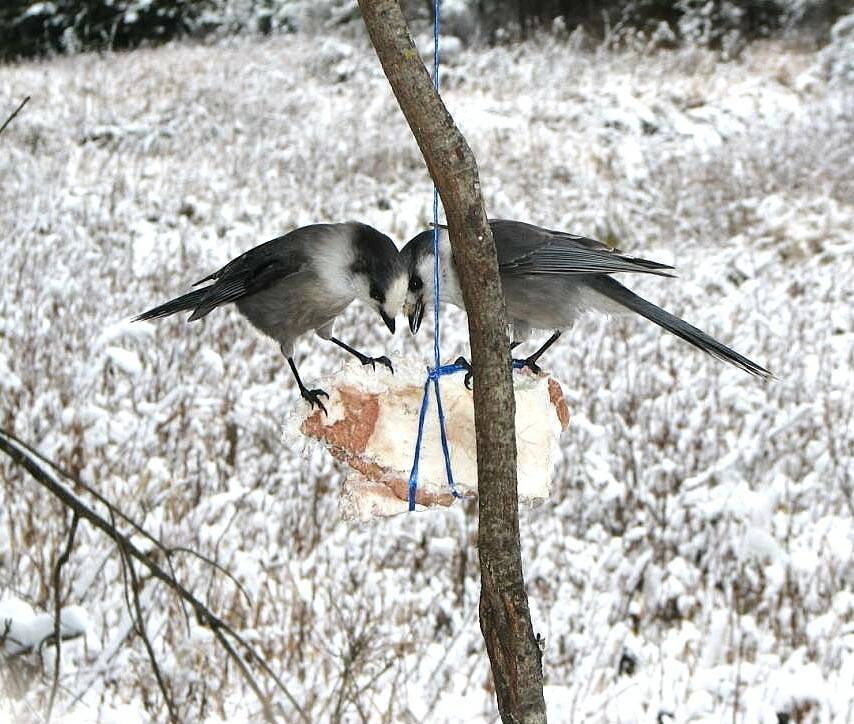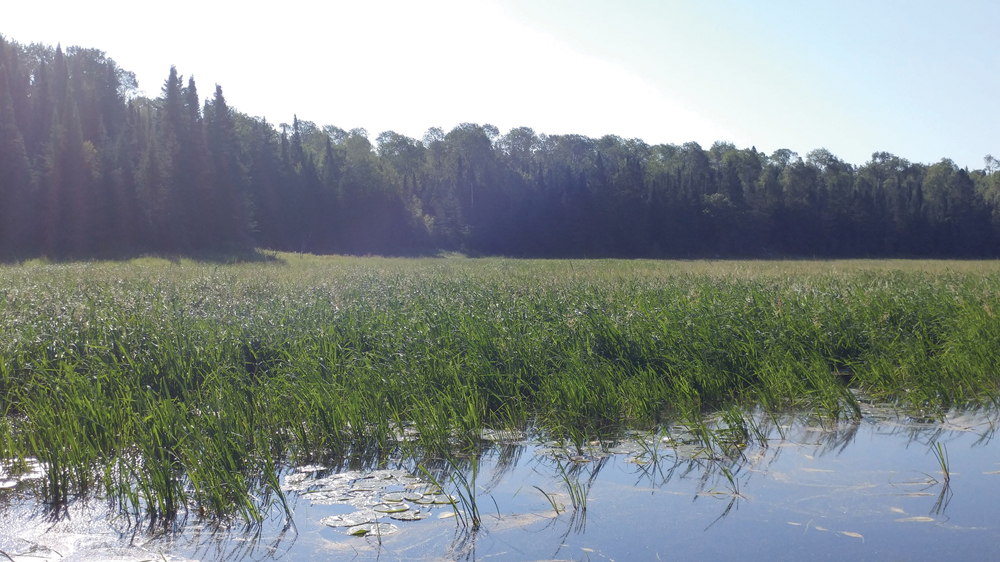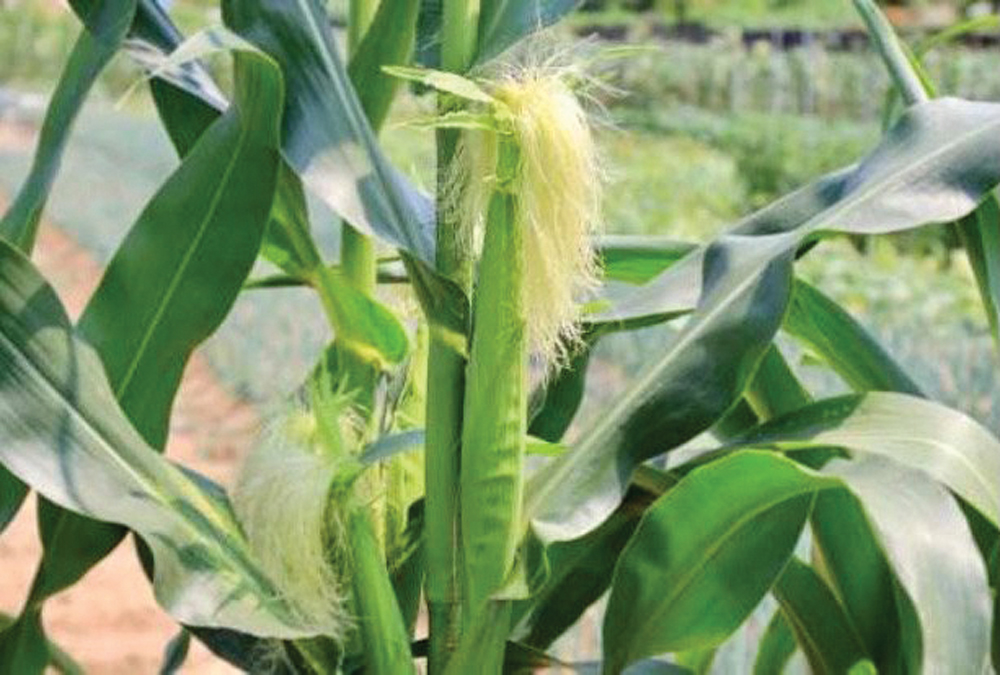Knowledge keepers at Niisaachewan Anishinaabe Nation estimate their ancestors harvested 500,000 pounds of manomin (wild rice) every year from the shallow bays along the Winnipeg River.
The nutrient-rich food — not a rice, but a cereal — historically helped families make it through harsh winters, writes Samantha Mehltretter, a researcher on the Manomin Project.
Beginning in the early 20th century, hydroelectric dams in the area would drastically change the course of the waters — flooding areas, washing away ancient pictographs and sacred sites, introducing pollutants and deluging the historic manomin fields.
Read Also

Hunting with whiskey jacks
Canada jays, or whiskey jacks, are bold little deer hunting pals that don’t mind getting close, if it means a piece of the offal or deer fat left over from a successful forest hunt in Manitoba.
Today, the manomin crop is an estimated one per cent of what it was.
The Manomin Project is a research partnership between Niisaachewan Anishinaabe Nation (NAN), near Kenora, Ontario, and the University of Guelph. The project combines Anishinaabe ecological knowledge and scientific data to study factors limiting growth of the wild ‘rice.’
The long-term end goal is to develop culturally appropriate crop management techniques and restore the manomin fields NAN cared for in the past.
“The project is a major first step in the revitalization of our fishery and manomin as a food source and economic driver,” said NAN Chief Lorraine Cobiness. “It reflects our efforts to build a culturally informed, economically sustainable future for our youth.”
“As long as the sun shines, the grass grows, and the river flows, we will continue to work towards sustainability for the manomin spirit,” said NAN councillor, Fabian Blackhawk. “We are committed to preserving and protecting this resource as unilaterally mandated by the community, the Elders, for generations to come.”
Loss and survival
Archeological evidence suggests Indigenous peoples occupied the land along Lake of the Woods and the Winnipeg River since 8500 BCE. Alternatively, ancestors of the Anishinabeg may have come from the east around 800 CE, possibly in search of manomin, wrote Brittany Luby, a historian at the University of Guelph.
Luby authored Dammed: The Politics of Loss and Survival in Anishinaabe Territory, recently published by University of Manitoba Press. The lands Luby describes in the book are her ancestral homeland.
She read excerpts of the book during a U of M webinar on October 21.
“Manomin is a complex carbohydrate that flourished locally before the postwar boom and dam construction,” she said.
“However (Indigenous people) arrived, the Lake of the Woods provided sustenance since time immemorial.”
Luby related how the government of Ontario shifted mindsets. At first it allowed all residents use of the water with little interference. However, in the early 20th century it moved to define water as a provincial resource.
Laws landlocked reserves so Indigenous peoples had little control over the water running through their lands. This simplified the process of damming rivers for generating stations.
Many years later, Ontario would recognize the damage it had done.
“We’ve come to a realization that Ontario Hydro is a company which failed to respect the Aboriginal people as individuals and nations with a proud history,” said Sam Horton, then vice-president of Aboriginal and northern affairs with Ontario Hydro.
In a 1993 speech to the Royal Commission on Aboriginal Peoples he called Ontario Hydro, “a company whose past construction activities have devastated the traditional lifestyles of many Aboriginal people.”
However, the damage had been done — and continues to be done. In an article titled “The Day After: Water,” Luby recounts how, in the fall of 2019, high water levels in Lake of the Woods led the province to redirect water into the Winnipeg River.
Water levels rose about five feet by the reserve, and families at NAN feared for their homes. A nearby historic pictograph site was almost completely destroyed by the high water.
“We can never forget the impacts they’ve had,” said Cobiness during the Oct. 21 webinar. “(Years of flooding) destroyed us. It literally destroyed our community. And it has taught us a lot in terms of how we have to make these changes, but also it has made us very strong.”
Restoring fields, food security
The Manomin Project is in early stages of research, Luby told the Co-operator. Restoration efforts have focused on fields selected by a team of NAN Elders who are guiding the project.
“It is too early to describe what restoration looks like on the Winnipeg River – but, it is not too early to dream of (re)seeding an Indigenous crop, teaching youth how to care for their plant relations, and, by so doing, revitalizing “cultural keystone places” for the practice and transmission of Anishinaabe ecological knowledge,” Luby wrote in an email.
Restoration of manomin fields represents an increase in food security and sovereignty for NAN.
Luby told the Co-operator that in 2019, NAN health-care workers wrote, “Working collaboratively to revive manomin fields is part of our health plans. If we are successful, we can improve local food options. By improving our health, we can build a more active and sustainable community.”
Elders have noted reduced food options and the prevalence of fast food have led to disease like diabetes whereas when they harvested manomin they “never had anything like that.”
Groceries are expensive in northwestern Ontario, project researcher Gabrielle Goldhar notes. Nutritious food for a family of four cost just over $1,000 per month, she said. Based on statistics from a 2016 Canadian Nutritious Food Basket survey, families in the Rainy River and Kenora areas spend over $150 more per month than their counterparts in southern Ontario.
Band members at NAN are often unable to access preferred cultural foods and turn increasingly to store-bought foods, writes Goldhar.
Northwestern Ontario isn’t an easy environment to pursue agricultural growth, but researchers say doing so will contribute to food security on a much broader scale.
“We see this project as relevant to addressing global food insecurity because the research is paradigm shifting in its approach to agricultural intensification,” said Samantha Mehltretter, a researcher with the project.
“Rather than researching approaches to add nutrients, divert water sources or artificially adjust growing conditions for food production, our work looks to work with nature, using the nutrients and water already in the river system to encourage the growth of an indigenous crop in its native habitat,” said Mehltretter.
















